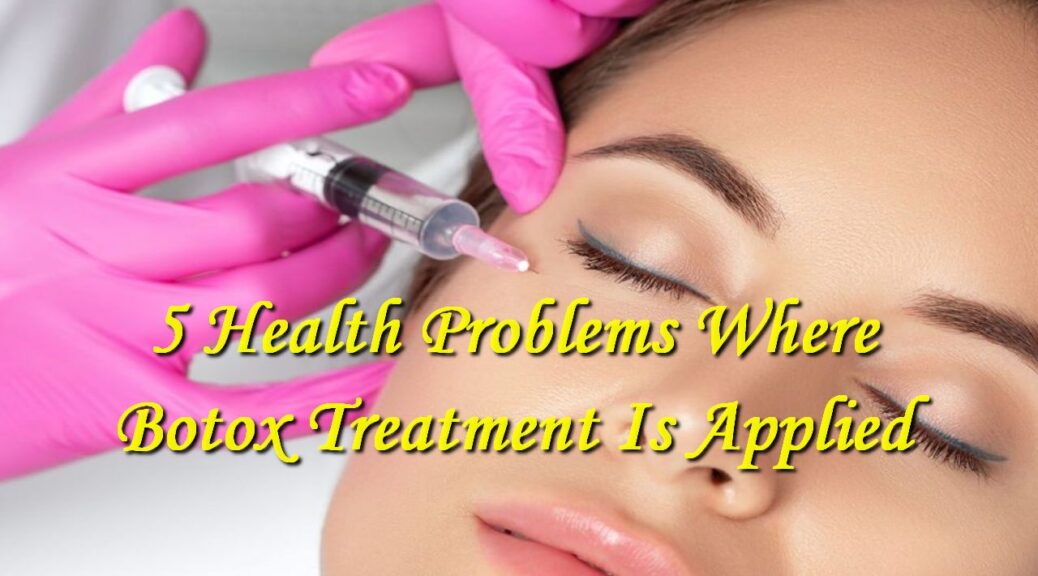
5 Health Problems Where Botox Treatment Is Applied
Botox, short for Botulinum toxin, is widely recognized for its cosmetic applications in reducing wrinkles and fine lines. However, beyond its cosmetic uses, Botox has found success in the therapeutic realm, offering relief for various health problems. From chronic migraines to muscle spasms, Botox has demonstrated its versatility in addressing a range of medical conditions.
In the realm of cosmetic enhancements, Clarion Aesthetics stands out as a trusted destination for Botox treatments, harnessing the power of Botulinum toxin to help clients achieve smoother, more youthful skin. Visit the website homepage and see for yourself!
Chronic Migraines

One of the groundbreaking applications of Botox in the medical field is its use for chronic migraines. Chronic migraines are debilitating headaches that occur on 15 or more days per month. Botox injections into specific head and neck muscles have been approved by regulatory authorities for preventing migraines in adults. The exact mechanism is not fully understood, but it is believed that Botox blocks pain signals by inhibiting the release of certain neurotransmitters. Studies have shown that Botox treatments can significantly reduce the frequency and severity of migraines, providing relief for individuals who struggle with this persistent and often disabling condition.
Muscle Spasms and Dystonia
Botox’s muscle-relaxing properties have proven beneficial in the treatment of muscle spasms and dystonia. Dystonia is a neurological disorder characterized by involuntary muscle contractions that result in repetitive or twisting movements. Botox injections can selectively weaken overactive muscles, providing relief for individuals experiencing muscle spasms or abnormal postures. This targeted approach helps restore normal movement patterns and enhances the overall quality of life for those affected by these conditions.
Hyperhidrosis (Excessive Sweating)

Hyperhidrosis, or excessive sweating, can be a source of significant discomfort and embarrassment for individuals. Botox has emerged as an effective treatment for hyperhidrosis, particularly in the underarms, palms, and feet. By blocking the release of acetylcholine, a neurotransmitter responsible for activating sweat glands, Botox injections can reduce excessive sweating. The results are not permanent, but the relief can last several months, making it a practical solution for those seeking respite from the challenges associated with hyperhidrosis.
Overactive Bladder
Overactive bladder (OAB) is a condition characterized by a sudden and involuntary contraction of the bladder muscles, leading to a frequent and urgent need to urinate. Botox has been approved as a treatment option for individuals who do not respond well to traditional medications for OAB. By injecting Botox into the bladder muscle, it helps relax the overactive muscles, reducing the urgency and frequency of urination. This application of Botox has provided a valuable alternative for those seeking relief from the disruptive symptoms of an overactive bladder.
Temporomandibular Joint (TMJ) Disorders
Temporomandibular joint disorders involve pain and dysfunction in the jaw joint and the muscles that control jaw movement. Botox injections have shown promise in treating TMJ disorders by relaxing the muscles responsible for jaw movement. This can help alleviate pain and discomfort associated with the condition. Botox injections are often used as part of a comprehensive treatment plan, working in conjunction with other therapeutic approaches to address the various aspects of TMJ disorders.
While Botox has gained fame for its cosmetic applications, its therapeutic potential extends far beyond the pursuit of aesthetic enhancements. From alleviating chronic migraines to providing relief for muscle spasms and hyperhidrosis, Botox has proven to be a versatile tool in the medical arsenal. As research continues, it is likely that additional health problems will benefit from the unique properties of Botox, further expanding its role in enhancing the well-being of individuals facing various medical challenges.